
Advanced Program in Physics, School of Mathematics and Physics, College of Science and Engineering,
Kanazawa University
Top > Laboratories
Research Laboratories
Low Temperature Physics

| School of Mathematics and Physics | Cooperative faculty member (Graduate school) | |
| MATSUMOTO, Koichi (Prof.) | TSUJII, Hiroyuki (Prof.) | |
| ABE, Satoshi (Prof.) | OKAMOTO, Hiroyuki (Assoc. Prof.) | |
| TAKAHASHI, Kei (Prof.) | ||
| YOSHIDA, Yasuo (Assoc. Prof.) | ||
| KANEKO, Hiroshi (Assist. Prof.) | ||
| OBATA, Yukiko (Assist. Prof.) |
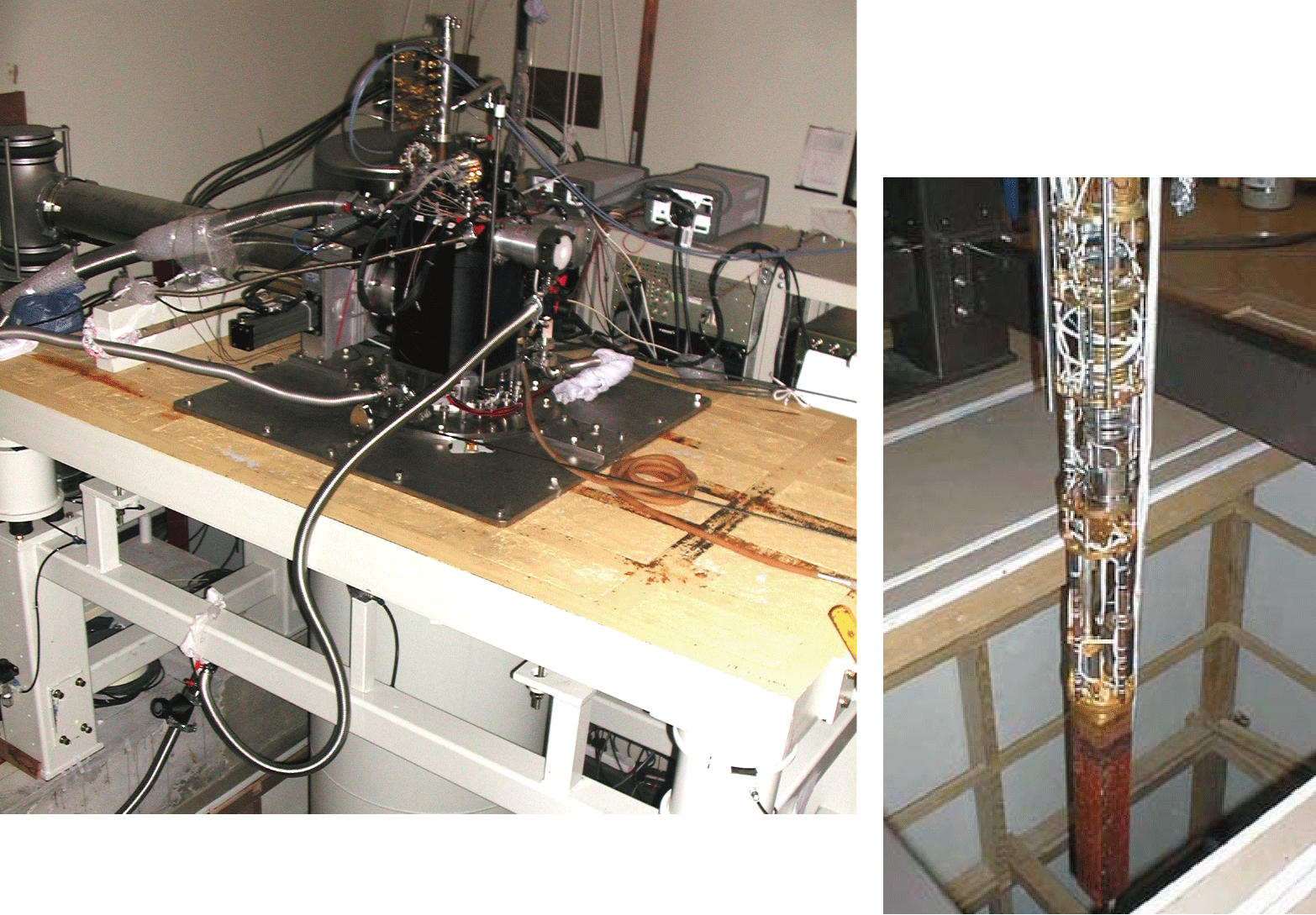
Macroscopic quantum phenomena such as superfluidity and superconductivity occur at low temperatures because of small thermal fluctuation. Our low temperature physics laboratory studies superfluidity of 3He, quantum transition and criticality of heavy Fermion compounds, nuclear magnetism of rare earth Pr compounds, and so on by means of 3He-4 He dilution refrigerator and Cu single stage nuclear demagnetization refrigerator in micro Kelvin temperatures.Experiments in such low temperaures are worked at limited laboratories in the world.In milli-Kelvin temperature range, we also study quantum fluid and solid, 4He superfluidity in porous materials, quantum transition from the experiments of specific heat, magnetic susceptibility, thermal expansion, magnetostriction, and acoustic properties using dilution refrigerator, 3He cryostat and cryostat with 15 T superconducting magnet. Magnetic refrigeration that makes use of magneto caloric effect is studied from 1 K to room temperature. We haveboth magnetic materials and refrigeration system of magnetic refrigeration.
Nano Physics

| School of Mathematics and Physics | ||
| ARAI, Toyoko (Prof.) | ||
| ARAKI, Yuki (Assist. Prof.) | ||
| OKABAYASHI, Norio (Assist. Prof.) | ||

Nanophysics is a research field that aims at discovery of new physical phenomena by observation, analysis and control of quantum mechanical phenomena between individual atoms and molecules in solid states as well as at explorative development of novel technologies using the phenomena. In our nanophysics laboratory, we develop scanning probe microscopes (scanning tunneling microscope (STM) and atomic force microscope (AFM)) with novel features, and explore nanoscale phenomena by observing and analyzing sample surfaces with atomic resolution, while developing novel nanoscale evaluation methods. From a fundamental scientific question of “How do atoms arrange on solid surfaces and react each other?” to applied science of bottom-up nanotechnology to fabricate novel quantum effect devices by assembling atoms and molecules, we challenge to find the answers and to build up the technology in untrodden fields.
Plasma Physics

| School of Mathematics and Physics | ||
| ANDO, Ritoku (Assoc. Prof.) | ||
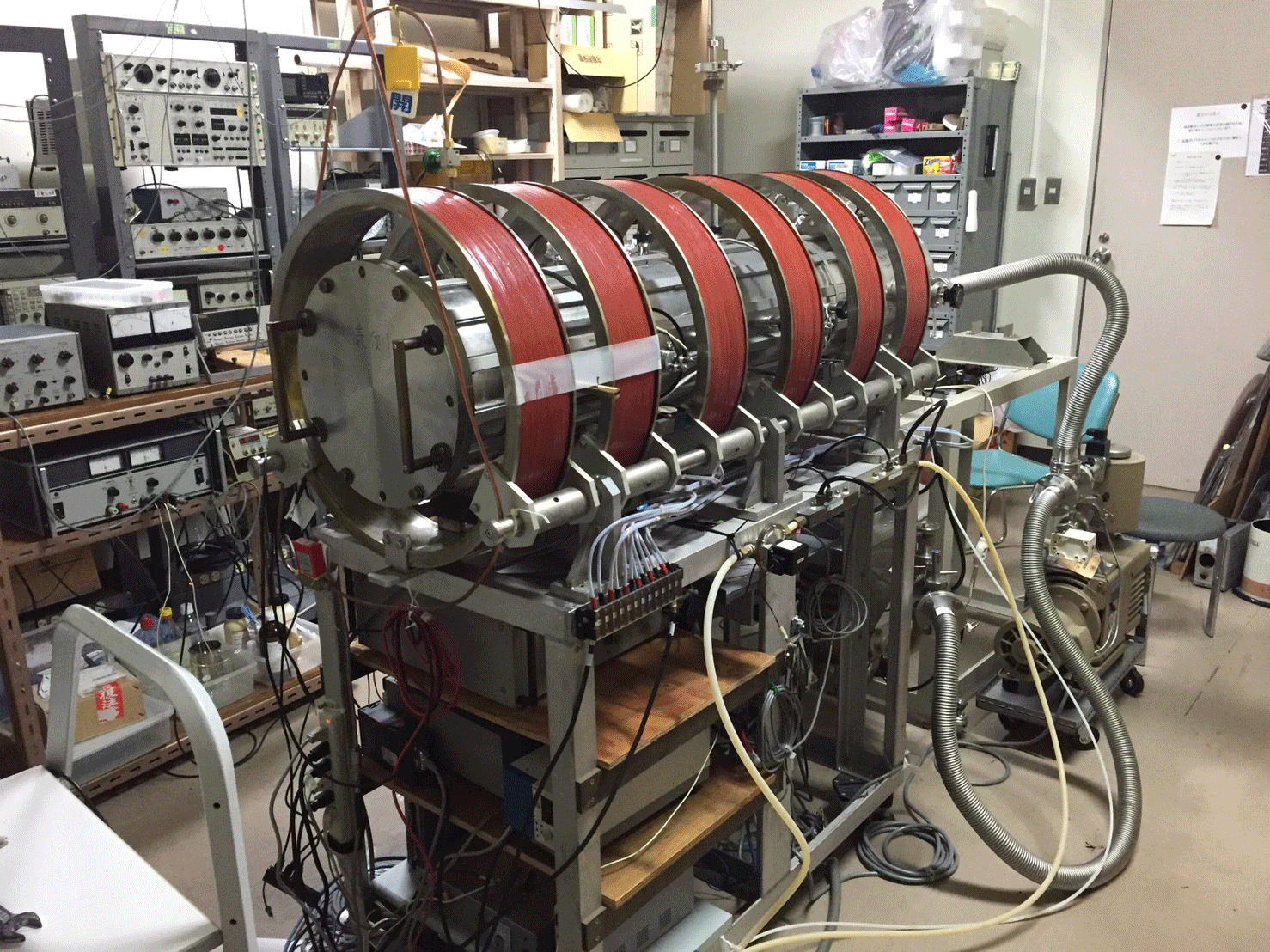
We engage in 2 subjects, now. (1) CALM2 experiment: Research in the excitation, and growth and saturation of waves observed in the electron beam -plasma system. Growth of waves changes plasma properties. Even weak nonlinearity is not simple. (2) CUSP Experiment: We set up new experiment that simulate the polar-cusp in space in collaboration with JAXA, Japanese space agency.
Molecular Physics

| School of Mathematics and Physics | ||
| FUJITAKE, Masaharu (Assoc. Prof.) | ||
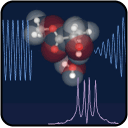
Our purpose at this laboratory is to elucidate the physicochemical properties and behavior of a molecule in the aqueous solution from a microscopic viewpoint. For that purpose, we are investigating experimentally how the structure and the property of an organic molecule change when a hydrogen bond molecular complex is formed. When a solute molecule and a small number of water molecules form a hydrogen bond complex, it is called the “micro-solvation cluster” and it is the most fundamental model of a hydration or a solvation. Since the hydrogen bond is weak compared with chemical bonds, such as a covalent bond, it will break immediately by collision not only in a solution but in a gas phase. Therefore, the lifetime of a complex is extremely short, and even now, it is very difficult to observe the detailed structure and behavior of the individual molecules in the aqueous solution exactly. We generate a very-low-temperature molecular flow of about 1K translational-temperature in a high vacuum by the supersonic pulse-jet technology which realizes a quasi-isolated state. Because the hydrogen-bond complex is stable in the supersonic-jet, it makes possible the detailed and precise measurement of the pure rotational spectrum. This method is called “the supersonic pulse nozzle jet Fourier-transform microwave-spectroscopy”. The pure rotational spectrum is a spectrum caused by the transition between the energy levels corresponding to an overall rotation of the molecule, and is usually observed in a microwave frequency range. Because the geometric structure of a molecule is strongly reflected in the rotational energy levels, the exact molecular structure can be determined by the measurement of the pure rotation spectrum. Due to the extremely high spectral resolution of our spectrometer, it is possible to make observation of completely separated spectra of various complexes in which numbers of H2O, hydrogen bonding site and orientation are different. Moreover, we can also obtain the accurate information about dynamical behaviors, such as a molecular vibration and intramolecular tunneling motion. Until now, we have investigated the N-methyl-acetamide water complex system, and the methyl-lactate/methylglycolate water complex system. N-methyl-acetamide is a model molecule of the peptide chain which is a main chain of proteins and we are working for clear understanding of the effect of hydrogen bond formation on the flexibility of a peptide chain. Methyl lactate and a methyl glycolate are the molecules which have an intramolecular hydrogen bond. We are investigating the competition and cooperation effects between the intermolecular hydrogen bond and the intramolecular hydrogen bond in the aqueous solution. We will further develop the studies and try to elucidate the nature and the behavior of a molecule in the aqueous solution from a microscopic viewpoint.
Biophysics

| Nano Life Science Institute (NanoLSI) | |||
| KODERA, Noriyuki (Prof.) | SHIBATA, Mikihiro (Prof.) | ||
| WATANABE, Shinji (Assoc. Prof.) | SUMINO, Ayumi (Assist. Prof.) |

Most of biological molecules show their vital activities through conformational dynamics. It had been one of dreams in biological sciences to directly observe biological macromolecules at work under a physiological condition, because such observation is straightforward to understanding their dynamic behaviors and functional mechanisms. Atomic force microscopy (AFM) is a powerful tool for visualizing molecules in liquids at single molecular resolution. However the imaging rate of conventional AFMs was too slow to capture dynamic biological processes. Our group has been improving the imaging speed of AFM and currently established high-speed AFM. We currently focuses on application of high-speed AFM to study molecular mechanism of proteins at single molecular level and also development novel techniques such as combined system of high-speed AFM and fluorescence microscopy/optical trap techniques. In addition, by increasing the scanning speed of scanning ion-conductance microscope (SICM), that can observe the surface characteristics of cells and organelles in a noncontact manner, we are also promoting applications of the microscope into the biological sciences.
Astrophysics

| School of Mathematics and Physics | ||
| YONETOKU, Daisuke (Prof.) | ||
| ARIMOTO, Makoto (Assoc. Prof.) | ||
| SAWANO, Tatsuya (Assist. Prof.) | ||
| KIMURA, Mariko (Assist. Prof.) |
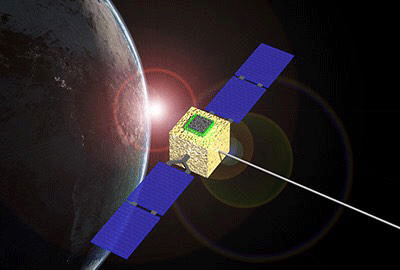
In the astrophysics lab, we develop X-ray/gamma-ray detectors for use on astronomy satellites, and observationally research the early Universe and the structural formation. A gamma-ray polarization detector was mounted on the solar sail IKAROS and launched in 2010, and we succeeded in detecting gamma-ray polarization from gamma-ray bursts (GRBs). A cryogenic high-resolution X-ray spectrometer that we developed with JAXA, NASA and other research institutions is now mounted on Astro-H and will be launched in 2016. For the future, we are now planning small satellites and making initial development of onboard instruments. We also analyze data obtained with satellites such as Suzaku, Swift, Fermi to research in astrophysics and cosmology. We are developing an educational couse to develop a 50 kg satellite in collaboration between science and engineering divisions.
Nonlinear Physics

| School of Mathematics and Physics | ||
| SATO, Masayuki (Prof.) | ||
| SOGA, Yukihiro (Assist. Prof.) |

We currently study nonlinear phenomena: (1) Nonlinear Energy Localization in Lattices, (2) Pattern formations in non-neutral Electron beams, and (3) Development of Terahertz Wave sources, by both experiments and simulations. (1) Lattice systems for localization studies are micro-mechanical systems, circuit lattices, and natural crystals. (2) Themes related to electron beams span from fundamental study of vortex to an application study such as compression of electron beams. (3) Terahertz projects cover generations and applications combined with lasers and spectrometers.
Elementary Particle, Cosmology, Theoretical Physics

| School of Mathematics and Physics | ||
| AOKI, Mayumi (Prof.) | ||
| TAKEDA, Shinji (Prof.) | ||
| ISHIWATA, Koji (Assoc. Prof.) | ||
| SAIKAWA, Ken'ichi (Assist. Prof.) | ||
| TOMA, Takashi (Assoc. Prof.) |
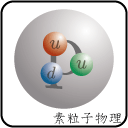
After the discovery of the Higgs particle at LHC (world wide collaborative research), the standard model of the elementary particle has been finally established. Now our next targets are what has been established by experiments but are not explained by the standard model, that is, neutrino masses and lepton mixings, dark matter, dark energy, etc. We are working for creating new models and unified models beyond the standard model, and analyze them phenomenologically focusing on the feasibility of experimental verification in the near future. Also our laboratory has active groups working for QCD world by Monte Carlo simulation technique using super computers including the Kei at Kobe, and for fundamental investigation of the field theory, quantum systems and statistical systems using the renormalization group method, path integral method, etc.